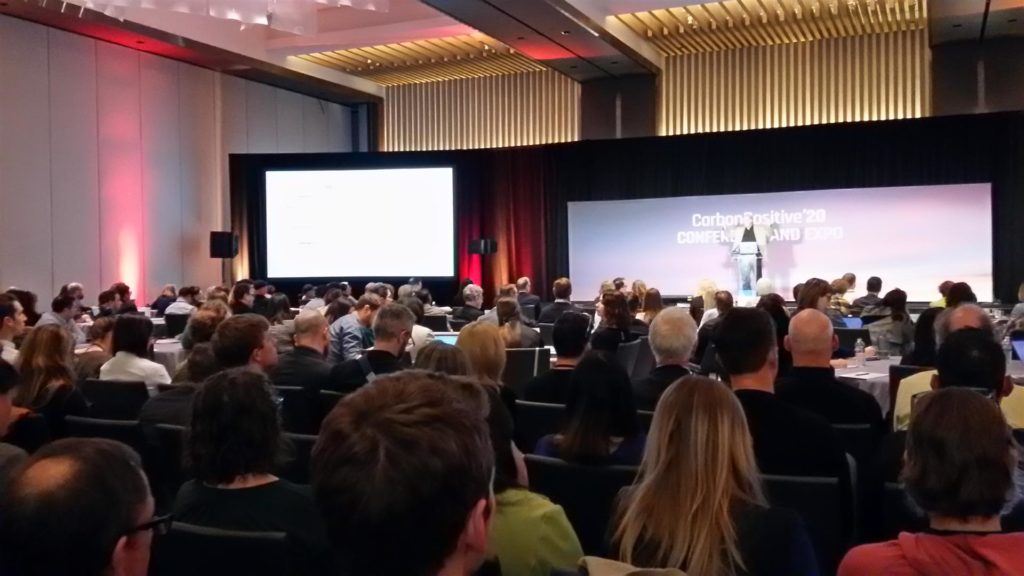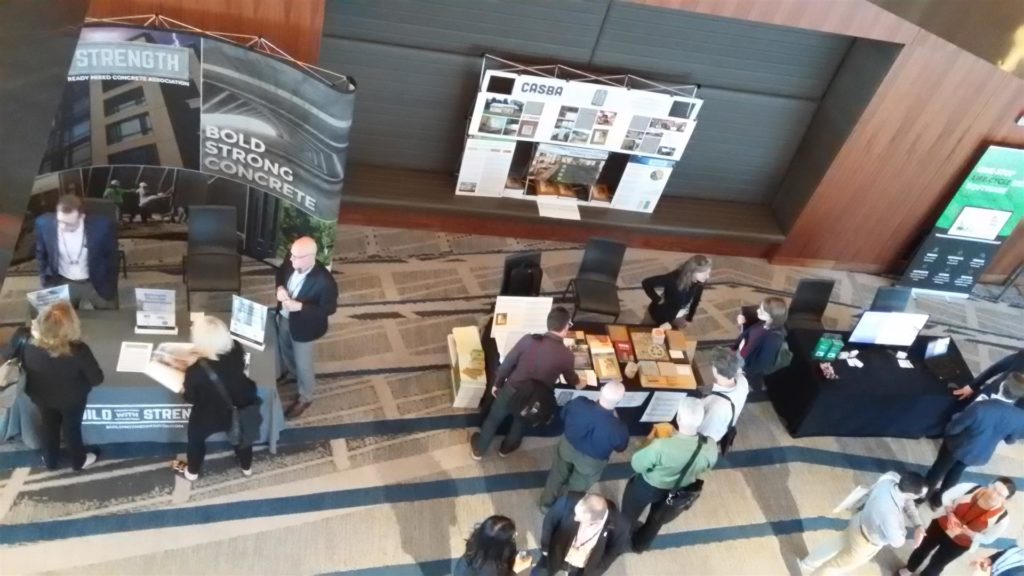Los Angeles March 2,3,4 2020 Michael F. Malinowski FAIA

Notes from the 2020 Carbon Positive Conference
The 2020 Carbon Positive Conference at the Intercontinental in downtown LA was well attended with hundreds of architects, activists, and experts from all over the world sharing insights, information and strategy. As Covid19 shifted handshakes to fist and elbow bumps, the urgency of climate action was palpable and constant. Over the three days, I found the speakers uniformly expert and compelling; the topics spanning the breadth and depth of the crisis ahead that calls us to action.

A sampling from my notes and scribbles:
“As an organization, we’ve pivoted and are addressing Climate Action as both a FOCUS and a FRAMEWORK to guide our efforts. We’re weaving this important issue into everything we do …” Debra Gerod FAIA AIACA President
The climate crisis is daunting, but it is also a call to action … a reminder of the fundamental duty of architects to protect the health, safety, and welfare of the public. There is no greater threat, and therefore no greater opportunity to do what we do best …”
Robert Ivy FAIA AIA EVP/CEO
“Don’t ask what will happen. Be what happens” … quoting historian and activist Rebecca Solnit Jane Frederick, FAIA AIA 2020 President
“The most powerful instrument for change on the planet … is the stroke of a designer’s pen”
Ed Mazria FAIA Founder Architecture 2030
“A 0.2% difference in the loan rate from one bank for a green construction loan was enough incentive to influence the carbon outcome and shift the marketplace”
(referencing the margin supported by the innovative and comprehensive EDGE software developed by IFC and used worldwide
Paeshant Kapoor IFC at the World Bank Group
Forest provide 73% of the mitigation from natural climate solutions.
Mark Wishnie, Nature Conservancy
‘Using timber actually incentivizes forest stewardship. For every tree cut in north America, three trees are planted” Referencing the carbon sequestration benefits of Mass Timber
Jennifer Cover Woodworks
“Growing up, who would have thought we’d be attending a conference about saving the world”
Ned Cramer Architect Magazine
“Natural Gas is the number one driver of climate change.”
methane is 84 times more potent than CO2 for climate degradation, and gas leaks from the distribution system are endemic, averaging one leak per mile in Boston for example
Panama Barthomay, Building Decarbonization Coalition
“.. the way we now typically design large buildings, they become uninhabitable when disconnected from fossil fuels” … “most building that will be here in 2050 are here right now”… “lets do what MASS Design does in Africa right here: love the buildings we have”
Carl Elefante FAIA Quinn Evans
“We need new disruptors … Business as usual is killing us …
It’s both system change and personal change. We must all rebel. Being professional does not mean being indifferent…
2030 is the new 2050 …
COV19 shows what an emergency response looks like …
We are in the midst of a mass extinction of our own making”
Farhana Yamin Track 0
Remove Less reuse buildings must be prioritized over demolition fix broken things, buildings, places to keep embodied carbon investments intact

My takeaway outline of Climate Action for this architect
Remove Less reuse buildings must be prioritized over demolition fix broken things, buildings, places to keep embodied carbon investments intact
Move Less develop further the many robust tools we have to allow virtual meetings, to avoid the carbon costs of flying and transit
Use Less increase efficiency of our building and fabrication process to eliminate waste)
Emit Less learn to make the smart carbon choices; research and apply the growing body of tools and resources that can support daily climate action in practice
CODA
I decided to make my ‘airport to downtown’ connection ‘low carbon’ … and found the biggest challenge was simple wayfinding (thank goodness for cellphone google). Once I figured out which bus would get me to the subway, I was kind of shocked that I was the only passenger on a huge cranky old hauler that got me to the Red Line. From there it was easy.
Conclusion: no extra time, and savings in carbon and cash … and another move toward a personal ‘new normal’ of everyday climate action.
MF Malinowski FAIA March 6 2020
